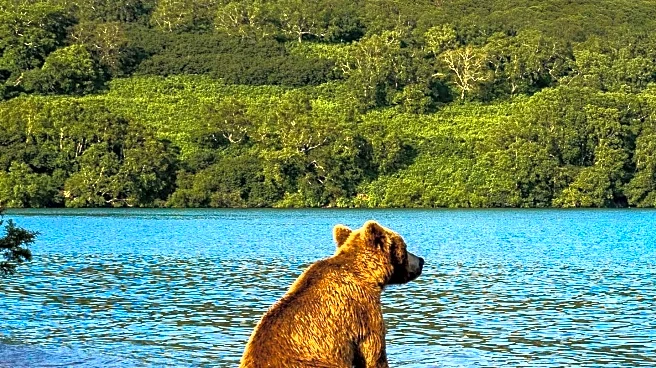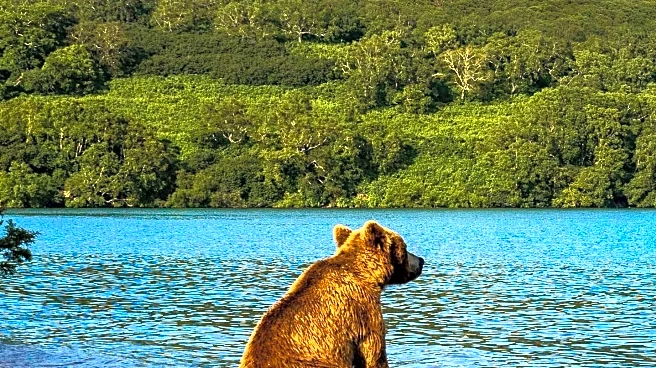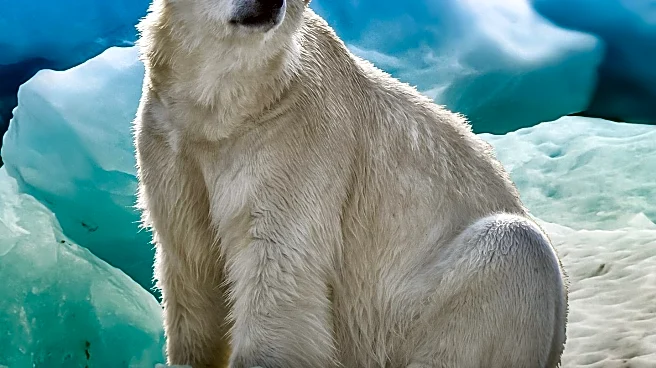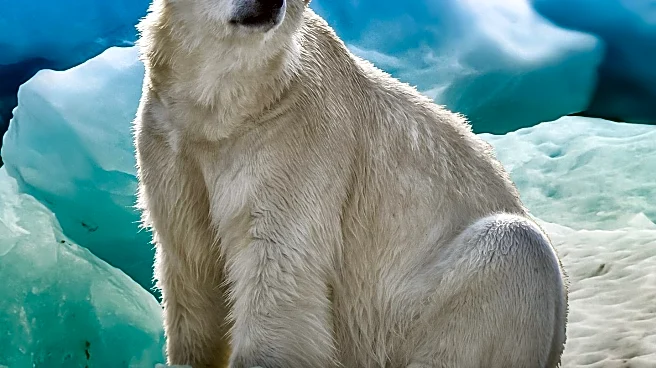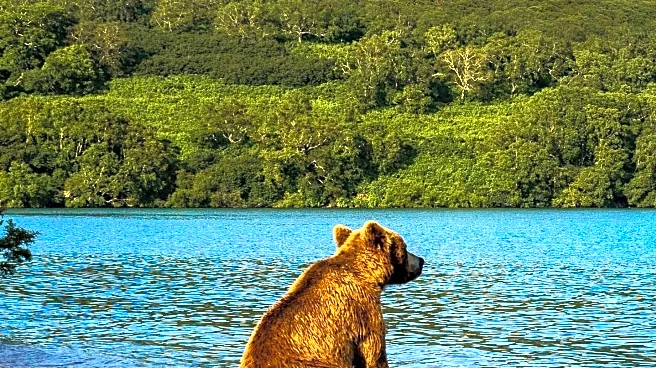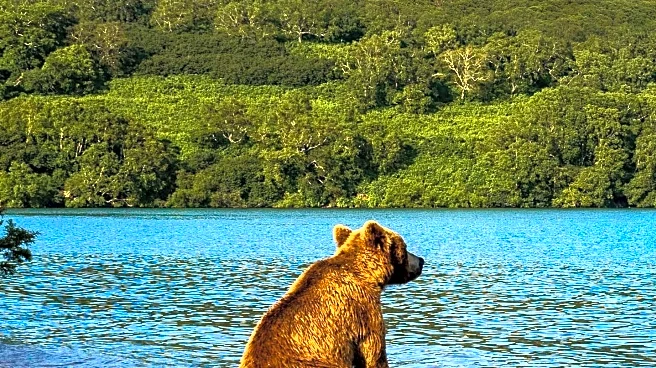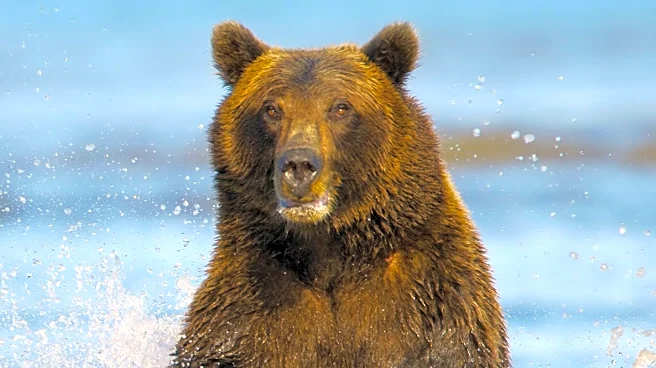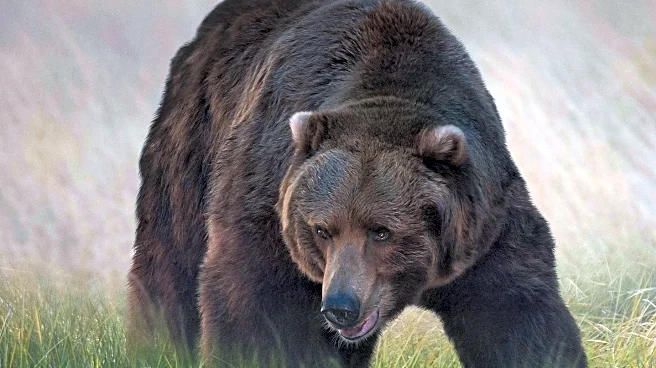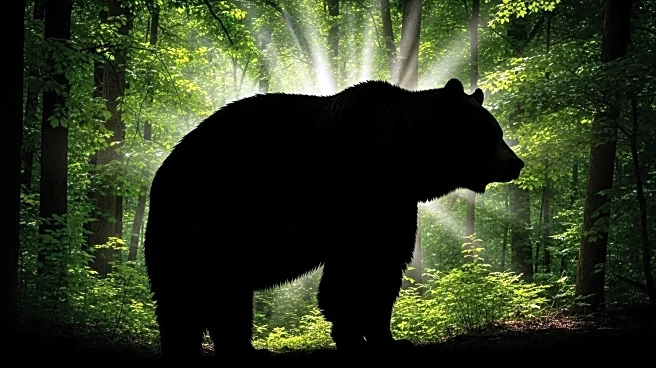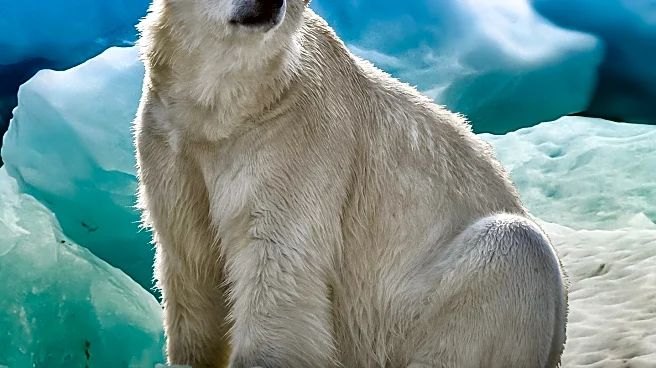What's Happening?
The annual Fat Bear Week competition at Katmai National Park and Preserve has concluded with '32 Chunk' being crowned the champion. The contest, which began in 2014, invites the public to vote for the bear that best exemplifies fatness and success among brown bears. This year, '32 Chunk' emerged victorious over rival bear '856', receiving 96,350 votes compared to 63,725. The competition featured 12 contenders, all of whom have been fattening up on salmon in preparation for winter hibernation. '32 Chunk' is noted for his large size, weighing approximately 1,200 pounds, and distinctive features including a scar and a broken jaw, likely sustained during a fight with another bear.
Why It's Important?
Fat Bear Week highlights the importance of conservation efforts and public engagement with wildlife. The event draws attention to the natural behaviors and survival strategies of brown bears, particularly their reliance on salmon as a food source. By involving the public in voting, the competition fosters a greater appreciation for wildlife and the ecosystems they inhabit. The popularity of the event also supports tourism in Alaska, as visitors are drawn to Katmai National Park to witness the bears in their natural habitat. This engagement can lead to increased support for conservation initiatives and awareness of environmental issues affecting wildlife.
What's Next?
As Fat Bear Week concludes, the bears at Katmai National Park will continue to prepare for hibernation, which typically begins in October and November. The park will likely see a decrease in visitor numbers as the bears retreat to their dens. However, the event's success may encourage organizers to expand or enhance future competitions, potentially increasing public interest and participation. Conservationists and park officials may also use the momentum from Fat Bear Week to advocate for further protection of bear habitats and the salmon populations that sustain them.
Beyond the Headlines
Fat Bear Week serves as a reminder of the delicate balance within ecosystems and the impact of human activities on wildlife. The competition underscores the importance of preserving natural habitats and ensuring sustainable practices that protect both bears and their food sources. Additionally, the event highlights the role of social media and online platforms in engaging global audiences with environmental issues, demonstrating how digital tools can be leveraged to promote conservation and education.

